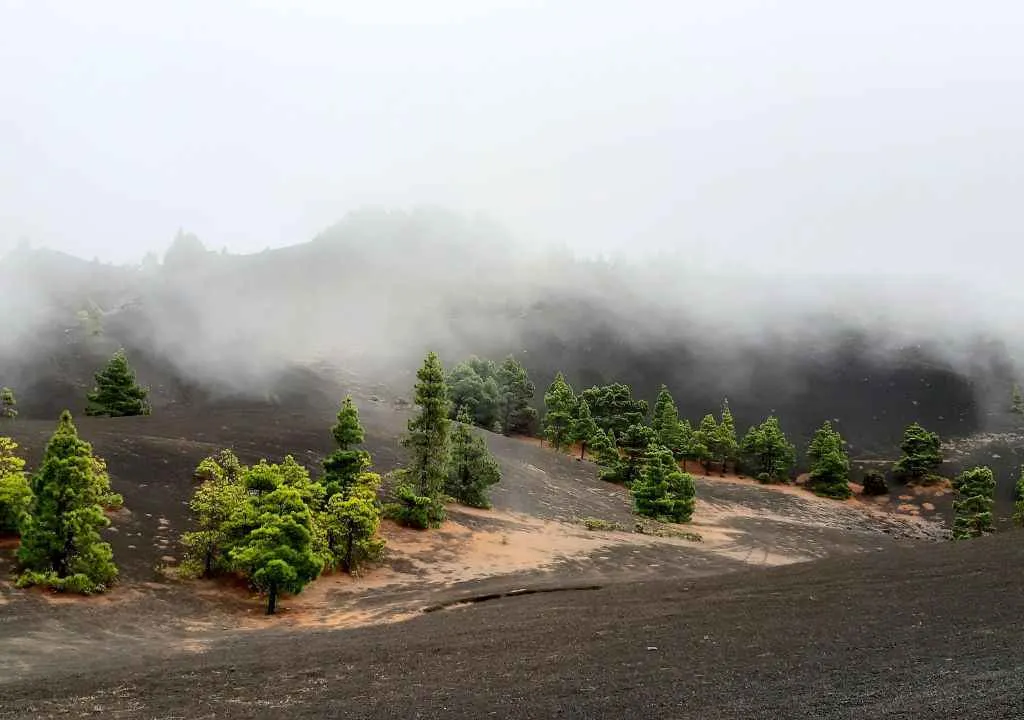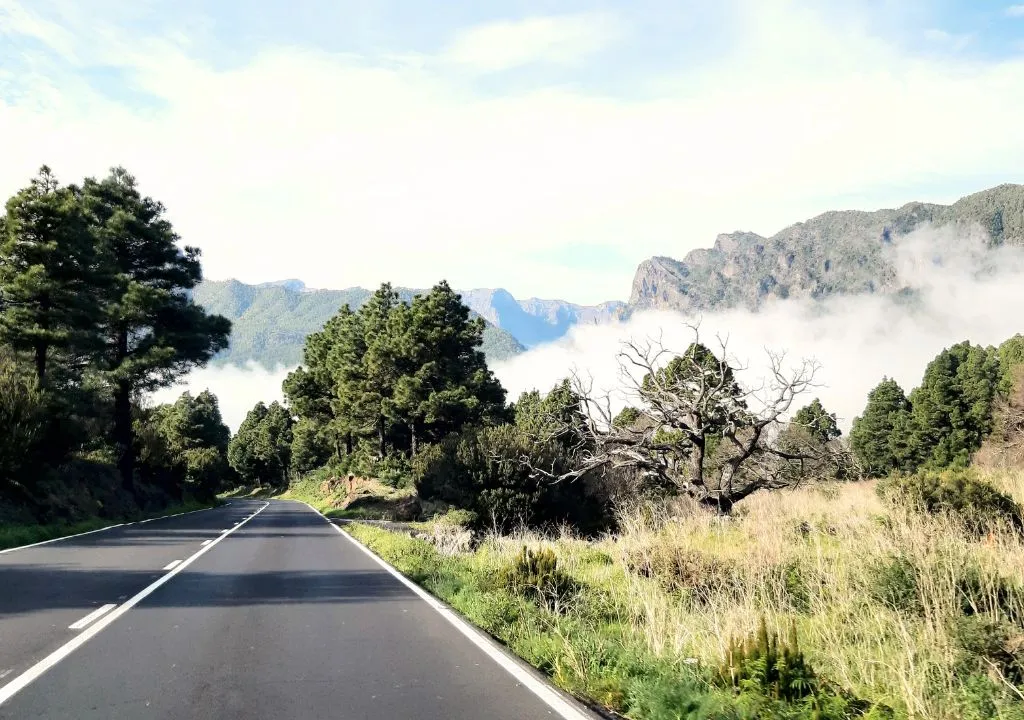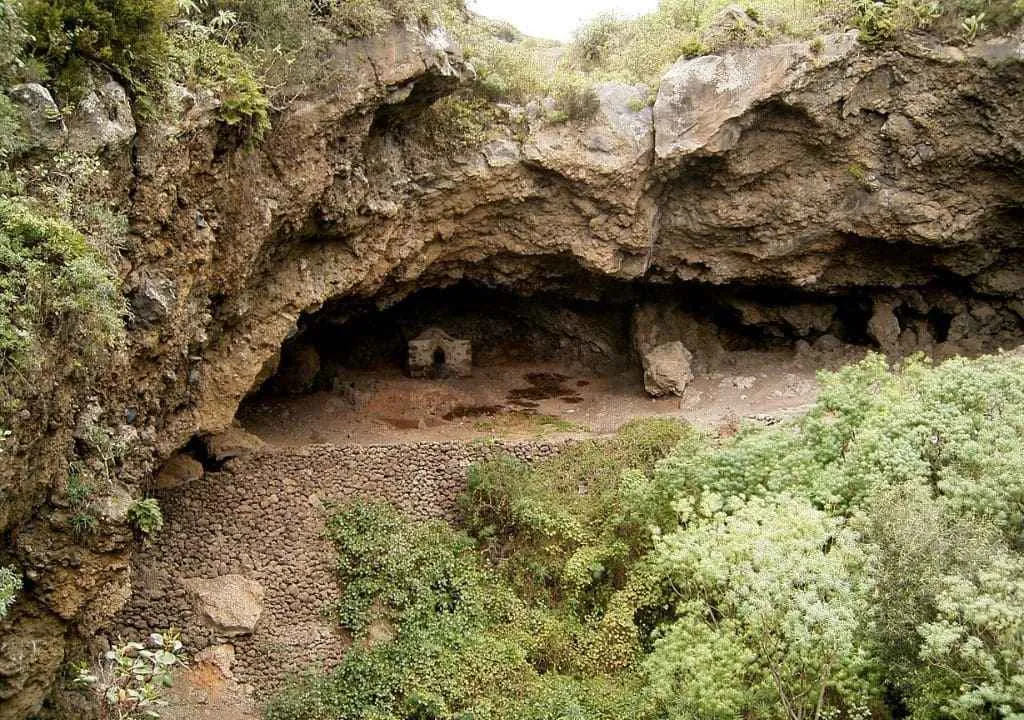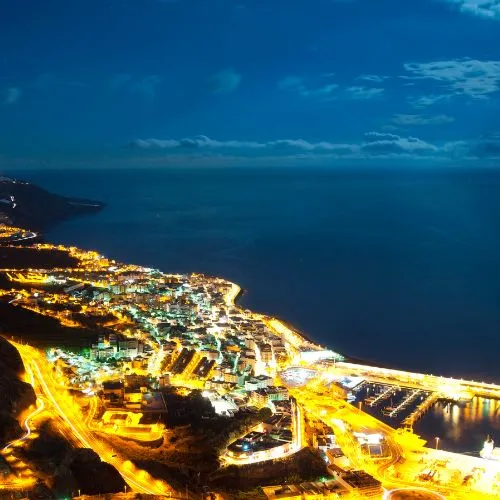The geography of La Palma, a gem in the Canaries, boasts stunning contrasts of mountains, coastlines, and forests, captivating travelers seeking the island’s unique natural beauty.
La Palma, an island of the Canary Archipelago nestled in the Atlantic, belongs to the province of Santa Cruz de Tenerife along with Tenerife, La Gomera, and El Hierro. Spanning 708 km² and home to 83,439 residents, it ranks fifth in both size and population. The island is renowned for its breathtaking nature and mountainous landscapes, making it a sought-after tourist destination.

La Palma Geography: The Natural Jewel of the Canaries
At 2,426 meters tall, the Roque de los Muchachos is La Palma’s highest peak. Remarkably, La Palma is the world’s third-highest island relative to its area and altitude above sea level, surpassed only by Pico in the Azores and Fogo in Cape Verde.
Like its Canarian siblings, La Palma’s volcanic origin dates back approximately 2 million years, making it one of the archipelago’s youngest members. Its birth was from a submarine volcano which eventually collapsed, forming the Caldera de Taburiente — a massive crater spanning 9 km in diameter and 1,500 meters in depth, which leads into the Barranco de Las Angustias gorge. The island’s youngest and most active part is the Dorsal de Cumbre Vieja in the south. It houses the majority of the island’s volcanoes, with the most recent eruption in 2021, giving rise to the Tajogaite volcano.
Water graces the island not just through regular rainfall but also through a phenomenon known as horizontal rain. Trade winds drive clouds to a low altitude against the island’s relief, creating mists. Especially in the laurisilva forests, this mist condenses into horizontal rain. The Canarian pine showcases how the island’s flora capitalizes on this, with its needle-like leaves acting as condensing filters, causing the mist to precipitate at the tree’s base.
La Palma boasts the honor of being a UNESCO Biosphere Reserve
Explore its vast laurisilva forests and witness the wealth of its biodiversity. The island’s coast, adorned primarily with Canarian palms and fruit crops like bananas, grapes, mangos, and avocados, gently unfolds into the sea.
La Palma’s geography vastly differs from north to south. The northern part, with its profound ravines, laurisilva forests, ferns, fayal-brezal, and predominant Canarian pine, is greener and rainier. Winding roads crisscross through the red-hued lands, colored so because of the volcanic peat. In contrast, the south boasts the stark black of basalt and solidified lava, interspersed with pine forests.
Journeying from north to south, one can’t miss the breathtaking vistas of the deep blue Atlantic Ocean, often with the silhouettes of Tenerife and La Gomera on the horizon.
Since 1983, La Palma’s Los Tilos laurisilva forest has been recognized as a UNESCO Biosphere Reserve. In 2002, this prestigious title was extended to cover the entire island, making La Palma the first Canarian island to gain such an honor.

Astronomical Tourism in La Palma: A Heavenly Experience in the Heart of the Atlantic
Nestled in the Atlantic, the island of La Palma stands as a beacon for astronomical wonders. The Roque de los Muchachos, thanks to its high elevation and geographical positioning, houses several telescopes within an observatory. Unique climate conditions on the island create cloud formations between 1,000 and 2,000 meters, functioning like mirrors. These reflect and shield the heavens from coastal light pollution, ensuring pristine stargazing conditions.

La Palma, recognized as one of the best global destinations for stargazing, thanks to its high altitude and minimal light pollution. Immerse yourself in the majesty of the universe like never before.
Recognizing the value of such celestial purity, the Spanish Government passed the Law on the Protection of Astronomical Quality on October 31, 1988, with the corresponding regulations being approved on March 13, 1992, proposed by the Canary Islands parliament. This set of rules shields La Palma’s geography from light, radio-electric, and atmospheric pollution. It also controls air traffic over the observatories to prevent disturbances. Consequently, several municipalities have incorporated public lighting that emits a ground-focused orange hue.
For this reason, La Palma is an ideal destination for astro-tourism enthusiasts, offering numerous activities and services for a vacation under the stars.
Municipalities of La Palma
La Palma is segmented into 14 municipalities, settled across two slopes. On the Western Slope, you’ll find: Garafía, Tijarafe, Puntagorda, Tazacorte, Los Llanos de Aridane, El Paso, and Fuencaliente. The Eastern Slope hosts: Barlovento, San Andrés, Puntallana, Santa Cruz de La Palma, Breña Alta, Breña Baja, and Mazo. Although Santa Cruz de La Palma holds the title of the island’s capital, it isn’t the most populated. Boasting a population of 15,361, it’s overshadowed by Los Llanos de Aridane’s 20,551 residents.
In summary, La Palma stands out not only for its diverse geographical and natural landscapes but also as a forefront in astronomical research and exploration. Its status as a Biosphere Reserve renders it an essential destination for nature enthusiasts and science aficionados alike. If you’re intrigued by the vast expanse of the cosmos and the untouched wonders of nature, La Palma awaits.


